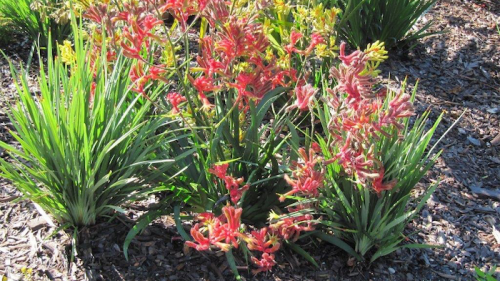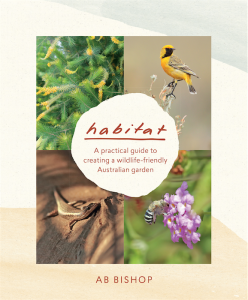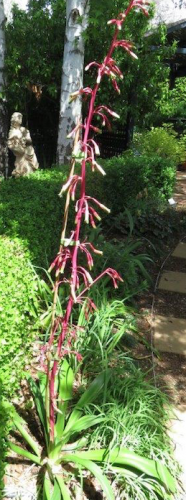
KANGAROO paws not only flower in summer, but some varieties can flower most of the year.

One person who promotes kangaroo paws (Anigozanthos flavidus) is Angus Stewart, a name familiar to ABC’s “Gardening Australia” viewers, who says: “This remarkable group of Australian plants embodies many of the qualities that make our native plants so distinctive”.
He has been responsible for many new varieties of paws.
Over the last 25 years there have been intensive hybridisation programs to provide a wide range of colour and sizes.
They range from the common taller varieties with red, yellow and orange flowers to dwarf hybrids, including even burgundy colours.
As Stewart says, the taller varieties are particularly tough plants and have survived more than 20 years in his own garden. The shorter varieties tend to be relatively short lived. So plant the tall varieties at the back of the garden bed.
Here are a few quick growing tips:
- They love the sun, especially reflected heat from a stone wall or a group of rocks. The rocks heat up during the day and keep the plants warm at night.
- They will need frost protection in winter if in an exposed position.
- Kangaroo paws are extremely drought hardy plants and can suffer from over watering, especially in winter. Once a week with a drip system for an hour at the most is ideal.
- When they finish flowering in late autumn simply cut to ground level. The tubular flowers are adapted for pollination by nectar-eating birds with long beaks. Position them in the garden so you can view the activities of these delightful birds.
A good starting point to buy these and all native plants is from the specialists, namely Cool Climate Natives in Beltana Road, Pialligo.

WITH Christmas on its way, it’s timely to start thinking about buying presents and, for gardeners, a good book never goes astray, one such being “Habitat” by AB Bishop (Murdoch Books, $39.95).
Accompanied by extensive photos, it’s the perfect book to encourage children and adults to create a flora and fauna-friendly garden. Bishop is a garden writer for the Melbourne “Age” and “Gardening Australia”.

SOME plants can be real tongue twisters; how about Beschorneria septentrionalis, a plant that suddenly appeared in our garden in early November, from where I do not know.
In a couple of weeks, the stem grew to about 30 centimetres with small tubular flowers, but then it took off, growing centimetres by the day and is now more than 180 centimetres. Originating in Mexico and also known as False Red Agave, it was only identified and named in 1987. I’d be interested if any readers are growing this plant? Please email me at cedricbryant@citynews.com.au
Jottings…
- Heaped grass clippings or leaves around tree trunks or shrubs can cause collar rot and kill them.
- Weeds and grass growing under fruit trees can reduce the crop by up to 40 per cent. Mulch instead.
- Feed tomatoes and strawberries every fortnight.
- To rid apple trees of codling moth, tie a band of cardboard around the trunk and tie in place only at the top.
- Try growing thornless roses through trees.
Who can be trusted?
In a world of spin and confusion, there’s never been a more important time to support independent journalism in Canberra.
If you trust our work online and want to enforce the power of independent voices, I invite you to make a small contribution.
Every dollar of support is invested back into our journalism to help keep citynews.com.au strong and free.
Thank you,
Ian Meikle, editor




Leave a Reply